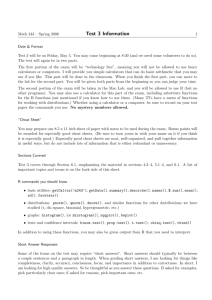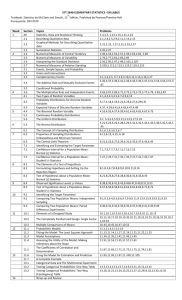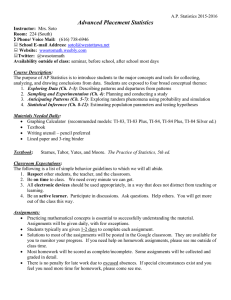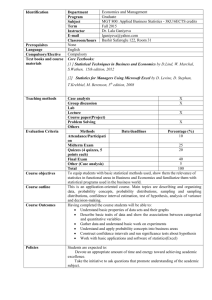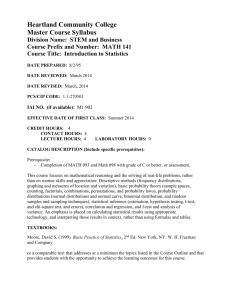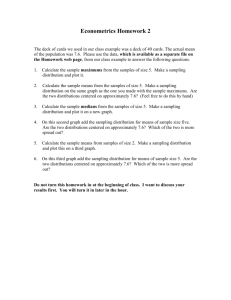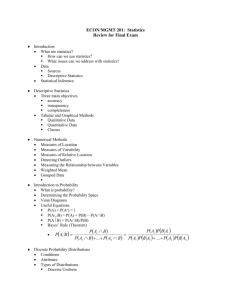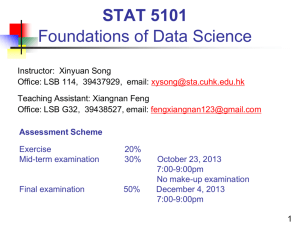Test 1 Information
advertisement
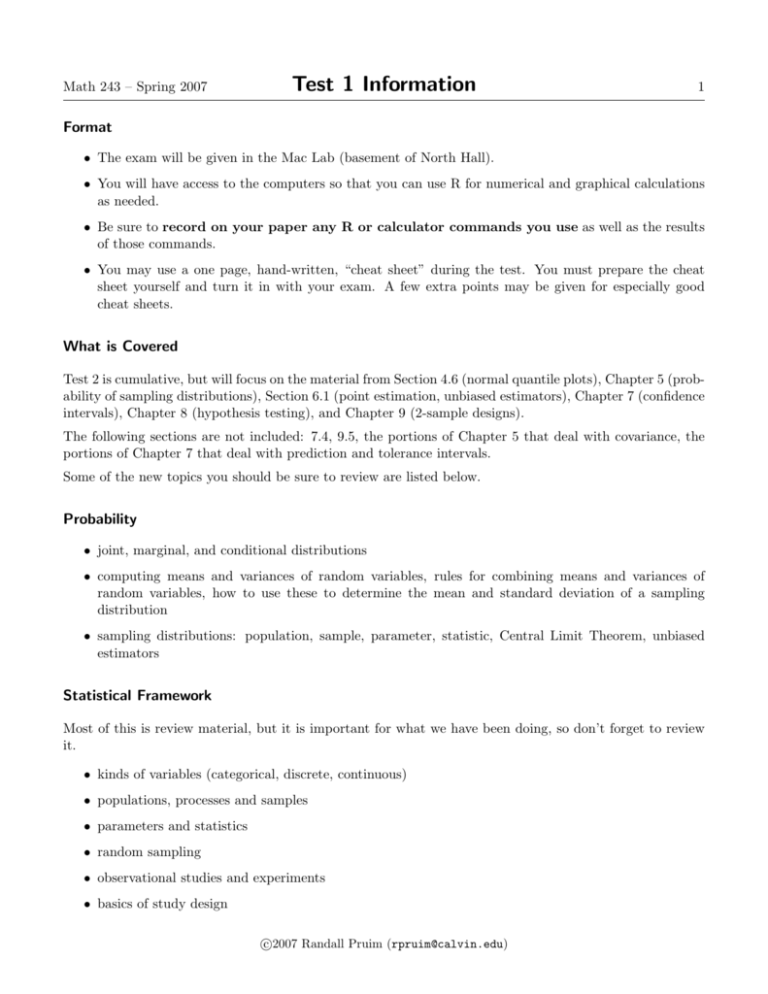
Math 243 – Spring 2007 Test 1 Information 1 Format • The exam will be given in the Mac Lab (basement of North Hall). • You will have access to the computers so that you can use R for numerical and graphical calculations as needed. • Be sure to record on your paper any R or calculator commands you use as well as the results of those commands. • You may use a one page, hand-written, “cheat sheet” during the test. You must prepare the cheat sheet yourself and turn it in with your exam. A few extra points may be given for especially good cheat sheets. What is Covered Test 2 is cumulative, but will focus on the material from Section 4.6 (normal quantile plots), Chapter 5 (probability of sampling distributions), Section 6.1 (point estimation, unbiased estimators), Chapter 7 (confidence intervals), Chapter 8 (hypothesis testing), and Chapter 9 (2-sample designs). The following sections are not included: 7.4, 9.5, the portions of Chapter 5 that deal with covariance, the portions of Chapter 7 that deal with prediction and tolerance intervals. Some of the new topics you should be sure to review are listed below. Probability • joint, marginal, and conditional distributions • computing means and variances of random variables, rules for combining means and variances of random variables, how to use these to determine the mean and standard deviation of a sampling distribution • sampling distributions: population, sample, parameter, statistic, Central Limit Theorem, unbiased estimators Statistical Framework Most of this is review material, but it is important for what we have been doing, so don’t forget to review it. • kinds of variables (categorical, discrete, continuous) • populations, processes and samples • parameters and statistics • random sampling • observational studies and experiments • basics of study design c 2007 Randall Pruim (rpruim@calvin.edu) Math 243 – Spring 2007 Test 1 Information 2 Statistical Inference Statistical inference has been our goal all semester. • sampling distributions and how they lead to statistical procedures • what a confidence interval is, what the level of confidence measures • null hypothesis, alternative hypothesis, p-value, significance level, type I and type II error, power • specific procedures for computing confidence intervals and hypothesis tests in the following situations: one-proportion, two-proportion, one-sample t, two-sample t, paired t, ◦ You should know our rules of thumb about when sample sizes are large enough to warrant using various tests. ◦ You must be able to identify which procedures can be used in what situations. • interpretting output from statistical software (like R) An Example Problem I will include a problem like the following on this test: What do I do? In each of the following situations, pretend you want to know some information and you are designing a statistical study to find out about it. Give the following THREE pieces of information for each: (i), what variables you would need to have in your data set (ii) whether they are categorical or quantitative, and (iii) what statistical procedure you would use to analyze the results. Select your procedures from the following list: 1-proportion, 2-proportion, 1-sample Z, 1-sample t, Paired t, 2-sample t (Some procedures may be repeated or omitted. For some situations there may be more than one solution – one correct solution suffices – but do not choose a design that is clearly inferior to other designs.) Example: • You want to know if boys or girls score better on reading tests at your grade school. Variables: reading score (quant), gender (cat); Procedure: 2-sample t; c 2007 Randall Pruim (rpruim@calvin.edu)
